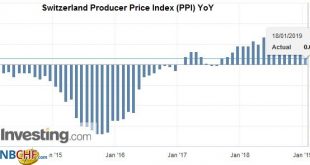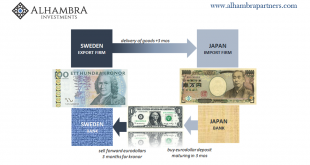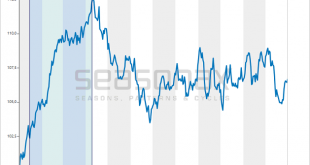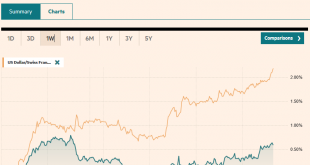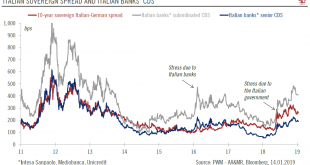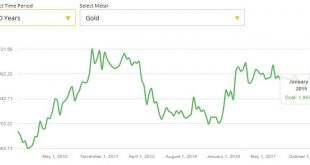The Producer Price Index (PPI) or officially named “Producer and Import Price Index” describes the changes in prices for producers and importers. For us it is interesting because it is used in the formula for the Real Effective Exchange Rate. When producers and importers profit on lower price changes when compared to other countries, then the Swiss Franc reduces its overvaluation. The Swiss PPI values of -6% in 2015...
Read More »FX Daily, January 18: Markets Finishing Week on Positive Note
Swiss Franc The Euro has fallen by 0.13% at 1.1311 EUR/CHF and USD/CHF, January 18(see more posts on EUR/CHF and USD/CHF, ) - Click to enlarge FX Rates Overview: Sentiment has improved since the volatility last month spooked investors and, perhaps, some policymakers. Global equities are rallying. The Shanghai Composite and the Nikkei are at their best levels in almost a month, while the Dow Jones Stoxx 600 is at...
Read More »Swiss and Italian leaders discuss cross-border tax deal
Swiss Foreign Affairs Minister Ignazio Cassis, left, with his Italian counterpart, Enzo Moavero Milanesi, in Lugano By spring, the Italian government is expected to clarify its position on a new tax system for cross-border commuters between Italy and Switzerland. “It is a delicate issue that must be digested sufficiently, with both administrative and political evaluations. It takes time, but spring is not far away,”...
Read More »Spreading Sour Not Soar
We are starting to get a better sense of what happened to turn everything so drastically in December. Not that we hadn’t suspected while it was all taking place, but more and more in January the economic data for the last couple months of 2018 backs up the market action. These were no speculators looking to break Jay Powell, probing for weakness in Mario Draghi’s resolve. There are real economic processes underneath....
Read More »The Strongest Season for Silver Has Only Just Begun
Commodities as an Alternative Our readers are presumably following commodity prices. Commodities often provide an alternative to investing in stocks – and they have clearly discernible seasonal characteristics. Thus heating oil tends to be cheaper in the summer than during the heating season in winter, and wheat is typically more expensive before the harvest then thereafter. Precious metals are also subject to seasonal...
Read More »FX Daily, January 17: Risk Assets Underperform as Investors Await Fresh Developments
Swiss Franc The Euro has risen by 0.32% at 1.1319 EUR/CHF and USD/CHF, January 17(see more posts on EUR/CHF and USD/CHF, ) Source: markets.ft.com - Click to enlarge FX Rates Overview: The capital markets remain relatively subdued as fresh trading incentives are awaited, including US corporate earnings. Some of the enthusiasm for risk-assets has diminished. The MSCI Emerging Markets Index has stalled after...
Read More »Outlook for euro periphery bonds
Economic fundamentals should come back into focus, but politics still a factor. After a year when peripheral countries’ old demons made a reappearance, with, in particular, Italy’s public debt back in the spotlight, the focus should shift to economic fundamentals in 2019. Both the Spanish and Italian economies are set to slow down, although the situation is more serious in Italy. In both countries, the political...
Read More »Gold Holds Steady Near $1,300/oz As Geopolitical Risks Including Brexit Loom Large
Gold Holds Steady Over £1,000 – Increased Likelihood Of A Disorderly Brexit – Gold supported near $1,300/oz ahead of important British Brexit no-confidence vote – Gold is consolidating in range between $1,280 and $1,300/oz (over £1,000/oz and €1,100/oz) – A break of resistance at $1,300 will likely see gold rise rapidly in all currencies – Physical demand for gold coins and bars has picked up in the UK and Ireland,...
Read More »As Germany and France Come Apart, So Too Will the EU
If we follow the logic and evidence presented in these seven points, we are forced to conclude that the fractures in France, Germany and the EU are widening by the day. When is a nation-state no longer a functional state? It’s an interesting question to ask of the European nation-states trapped in the devolving European Union. Longtime correspondent Mark G. recently posed seven indicators of dissolving national...
Read More »Financial watchdog pushes for upgrade of cyber defence
So far, Switzerland’s financial sector has escaped major cyber attacks unscathed according to the watchdog unit. The chief executive of the Swiss financial watchdog, Mark Branson, has called for the creation of a national cyber defence centre. In an interview with the SonntagsZeitung newspaper, Branson reiterated that Switzerland was lagging on safety standards behind other financial centres. Both the awareness and the...
Read More » Swiss Economicblogs.org
Swiss Economicblogs.org

